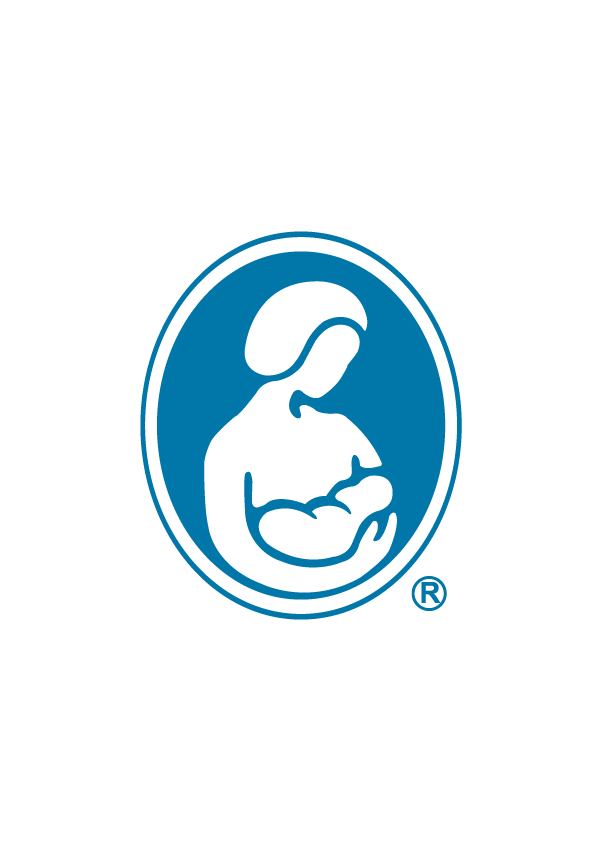

有时,您可能希望将自己的母乳挤出并储存起来,以备后用。由于其抗菌特性,人乳在不同环境适应力强且很好储存。然而, 储存母乳的时间总是越短越好。换句话说,母乳越新鲜越好。安全储存母乳将有助于保持其质量,并将储存过程中抗体和营养物质的损失降至最低。第一步是在挤出母乳之前,一定要用热肥皂水洗手。
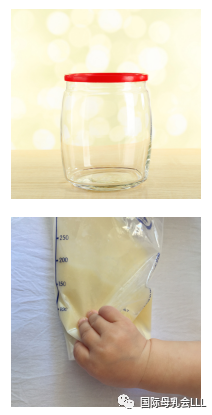
在每个母乳容器上贴上注明吸奶日期的标签很重要。如果母乳将在日托中心提供给您的宝宝,请在标签上写上您宝宝的名字。
可重复使用的硬容器:
· 带盖子能盖紧的玻璃或硬塑料容器(例如,小玻璃瓶或奶瓶)都是极好的选择。
· 如果使用塑料容器,请避免含化学物质双酚A (BPA)和双酚S (BPS)的材质。
· 将容器放入热肥皂水中清洗,充分冲洗,然后在倒入挤出的母乳之前晾干,或在洗碗机中清洗并烘干。
· 考虑到母乳在冷冻后体积会膨胀,如果冷冻您的母乳,请留出一英寸(约2.54厘米)的空间。(您一定不希望容器在冰柜里破裂或盖子被顶开脱落吧!)
母乳储存袋:
· 选择专为储存人乳而设计的袋子。(奶瓶内胆塑料袋和塑料食品保鲜袋不是安全的储存选择,因为它们可能会破损而导致乳汁漏出来,并且有些种类的塑料可能会破坏人乳中的一些营养成分 )。两层包装有助于防止意外破损。
· 密封前挤出顶部的空气,如果母乳要被冷冻,留出大约一英寸(约2.54厘米)的空间让其膨胀。
· 将储存袋子直立放在冰箱或冰柜的硬容器中。
每个容器里放多少母乳:
· 为了避免浪费奶,根据宝宝的月龄,可以储存不同的量,可能是15 毫升、30毫升、60毫升和120毫升。
· 注意: 任何在喂奶过程中曾接触到宝宝的嘴的母乳,如果没有喝完,需要在1-2小时内将母乳倒掉。储存不同量的母乳,可以帮助您更好准备宝宝一次想吃的量,避免浪费宝贵的母乳。
· 乳汁量越少越容易解冻。在24小时内挤出的任何母乳都可以加入冰箱中的同一容器中。首先,将新挤出的母乳放在冰箱的另一个容器中冷却30至60分钟,然后将其加入冰箱中已有的母乳容器中。
储存处 | 温度 | 最长储存时间 |
室温下 (新鲜母乳) | 16~26°C | 最佳4小时;6-8小时 在非常清洁的条件和较低的室温下。 (母乳挤出后,最好立即冷藏。) |
隔热冰包 | -15~4°C | 24小时 (这个数字是根据有限的研究得出的。时间越短越好。冰袋应接触母乳储存容器,并尽量减少打开冰包。) |
冰箱冷藏室 | < 4°C | 最佳4天;5-8天 在非常干净的条件下 |
冰箱内的 非独立门冷冻室 (例如,在酒吧式冰箱内 ) | -15°C | 2周 |
带单独门的 冰箱冷冻室 (标准家用冷柜) | -18~20°C | 最佳3个月;6个月可接受 |
冷冻柜 | -18~-20°C | 最佳6个月;12个月可接受 |
·母乳不需要加热到特定的温度。婴儿可以直接喝冷藏的或在室温下的母乳,但许多婴儿确实更喜欢将其加热至体温。
· 小心不要将从冷冻室里取出的玻璃容器直接放在非常热的水下,因为玻璃可能会破裂。
· 可通过以下方式解冻冷冻母乳:
· 在冰箱中缓慢解冻比用温水解冻脂肪损失更少。
· 解冻的母乳或冷藏的母乳可以在温水下慢慢加热、放入一杯温水中、或使用电热装置加热。
· 避免煮沸母乳,因为这会导致宝贵营养的损失。
· 避免微波加热母乳,因为这会使母乳受热不均匀,产生热点,当婴儿饮用时可能会烫伤婴儿的嘴。微波也会导致重要营养物质的损失。(ABM,2017)。
· 加温过但未使用过的冷母乳可以放回冰箱供以后使用。
· 婴儿饮用过的容器中剩余的母乳,可以在接下来的1-2小时内提供给婴儿。在那之后,它应该被丢弃。
· 解冻后的冷冻母乳可在冰箱中保存长达24小时。在那之后,它应该被丢弃,而不是重新冷冻。
· 请记住,冷藏母乳会比曾经冷冻过的母乳更新鲜。提前做好计划对决定是否要把母乳冷藏或冷冻有帮助。
· 避免将母乳与配方奶粉在同一次喂奶中混合。当牛奶配方奶与挤出的人乳混合时,人乳中的溶菌酶数量减少,大肠杆菌含量可能增加(Jones,2019)。
· 储存时,人乳可能会分为乳清层、乳脂层,这很正常。在喂给宝宝之前,轻轻地摇晃使之混合。
· 如果您患有鹅口疮(体内真菌过度生长),可在治疗期间继续以母乳喂养您的婴儿。在鹅口疮治疗期间挤出的母乳可以安全地喂养给婴儿,但应该贴上标签,表明您当时患有鹅口疮。需要注意的是,冷藏和冷冻不能杀死酵母菌。没有证据表明,用酵母菌爆发期间挤出的母乳喂养您的婴儿会导致酵母菌感染复发。
· 偶尔,已解冻后的冷冻母乳可能会有肥皂味或金属味,或与新鲜母乳有所不同。这是由于乳脂随着时间的推移会分解。这种母乳是安全的,大多数婴儿仍然会喝它。
· 粘稠、气味难闻的母乳应该扔掉,不要喂给您的宝宝。

STORING HUMAN MILK
There may be times when you wish to express and store your own milk for later use. Human milk is remarkably resilient and stores well, due to its antibacterial properties. However it is always preferable to store milk for as short a time as possible. In other words, the fresher the milk, the better. Storing your milk safely will help to maintain its quality and minimize the loss of antibodies and nutrients while in storage. The first step is to always wash your hands in hot soapy water before expressing milk.
Types of Storage Containers
It is important to label every container of milk with the date it was expressed. Put your baby’s name on the label if the milk will be given to your baby in a day care setting.
Reusable Hard Containers
· Glass or hard plastic containers with well-fitting lids (for example, small mason jars or bottles) are excellent choices.
· If using plastic containers, avoid the chemical bisphenol A (BPA) and bisphenol S (BPS).
· Wash containers in hot, soapy water, rinse well, and allow them to air-dry before filling with expressed milk, or wash and dry in a dishwasher.
· If freezing your milk, leave an inch of space to allow the milk to expand as it freezes. (You don’t want your containers to break or the lid to come off in the freezer!)
2
Milk Storage Bags
· Choose bags that are specifically designed for storing human milk. (Bottle liner bags and plastic food bags are not considered safe storage options because they may leak and the type of plastic may destroy some nutrients in human milk). Double-bagging can help prevent leakage accidents.
· Squeeze out the air at the top before sealing and allow about an inch for the milk to expand if it is going to be frozen.
· Stand the bags in a rigid container in the refrigerator or freezer.
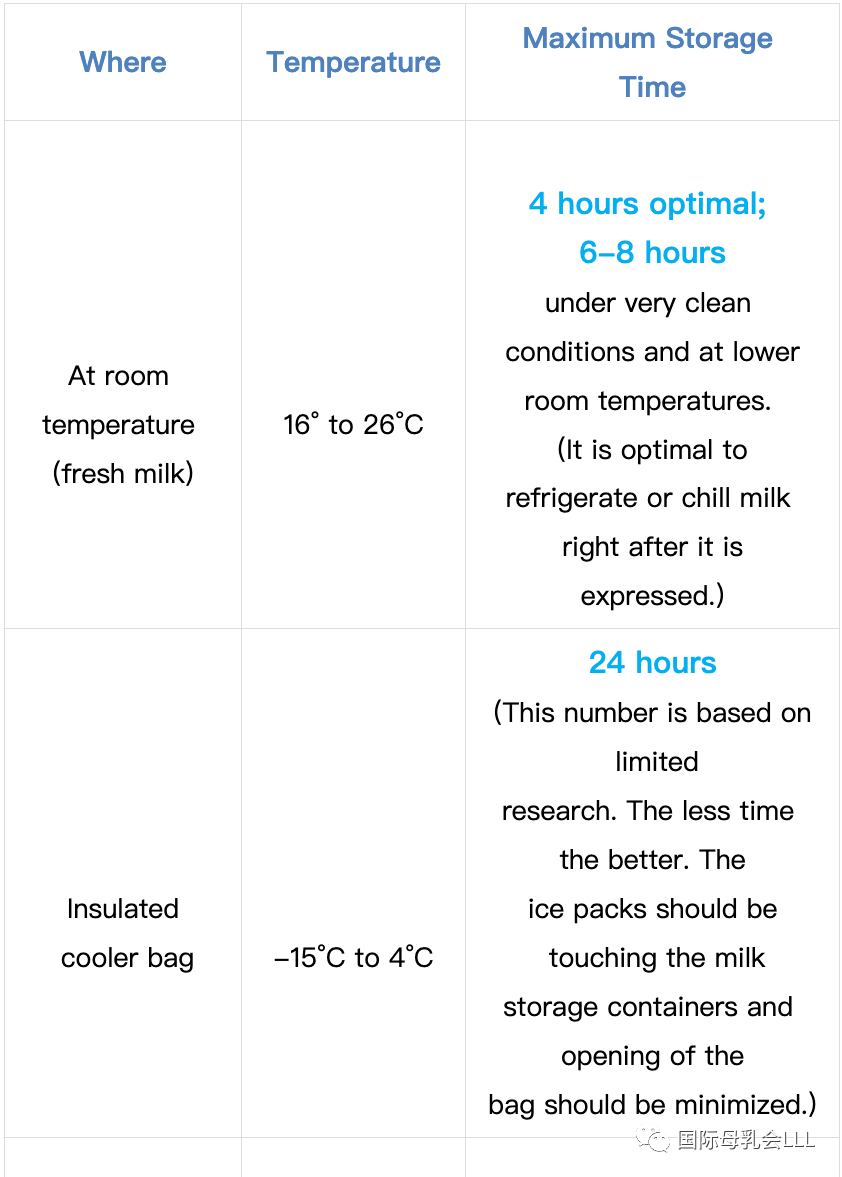
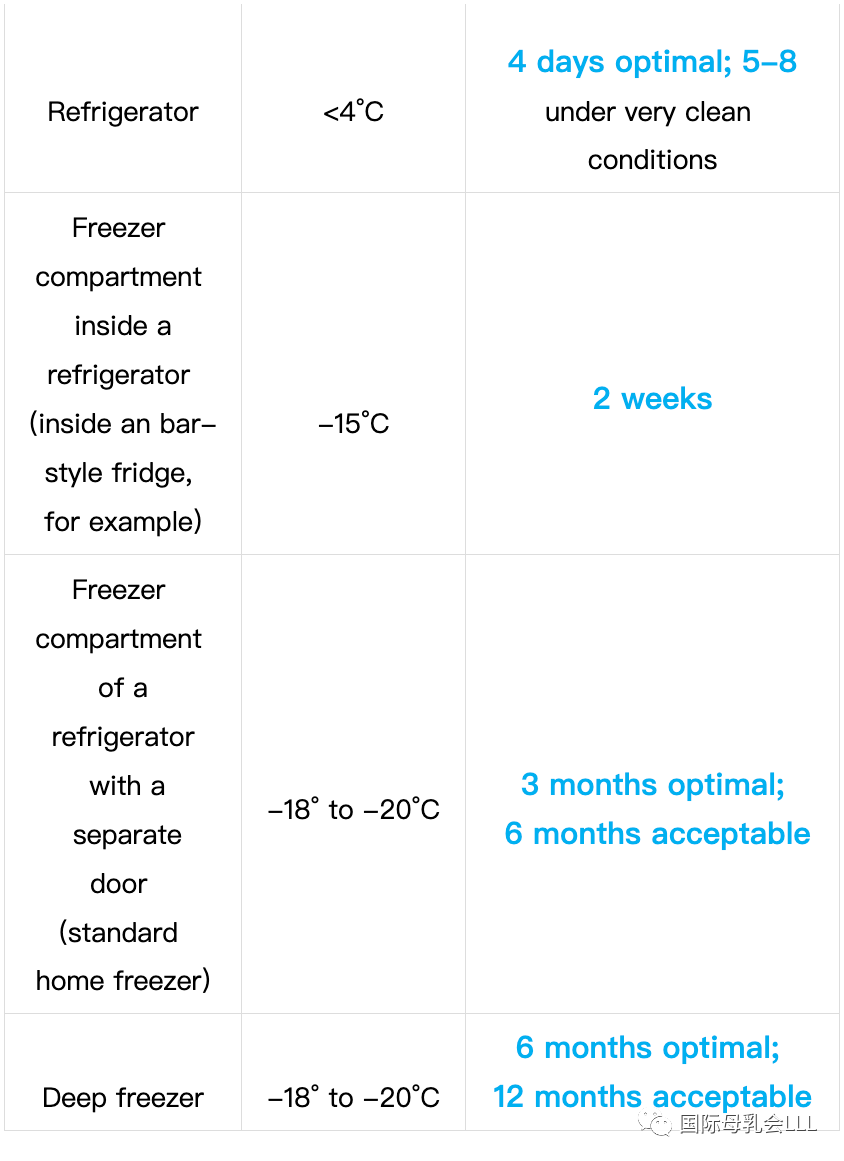
How much milk to put in each container
· In order to avoid wasting milk, store in a variety of amounts, perhaps 15ml, 30ml, 60ml and 120ml, depending on the age of your baby.
· Note: any milk that touches your baby’s mouth during a feeding will need to be thrown out within 1-2 hours if it isn’t consumed. Storing in a variety of volumes allows you to choose the amount your baby is likely to want to eat at a single feeding and avoid wasting valuable milk.
· Smaller quantities are easier to thaw.
· Any milk expressed in the same 24-hour period can be added to the same container in the refrigerator. First, cool the newly expressed milk in a separate container in the refrigerator for 30 to 60 minutes and then add it to the container of milk already in the refrigerator.
Warming Milk
· Milk does not need to be warmed to a particular temperature. Babies can drink milk straight from the refrigerator or at room temperature but many do often prefer it to be warmed to body temperature.
· Be careful not to place glass straight from the freezer under very warm water because the glass can break.
· Frozen milk can be thawed by:
· Slow thawing in the refrigerator results in less fat loss than thawing using warm water.
· Thawed milk or milk that has been refrigerated can be warmed slowly under lukewarm water, placed in a cup of warm water or warmed using an electric warming device.
· Avoid boiling human milk as this causes the loss of valuable nutrients.
· Avoid microwaving human milk as this heats the milk unevenly, creating hot spots that may burn the baby’s mouth when the baby drinks it. Microwaving also causes the loss of important nutrients. (ABM, 2017).
Using Stored Milk
· Cold milk that is warmed but untouched can be returned to the fridge for a later feeding.
· Milk that is left over in the container after the baby drinks from it can be given to the baby within the next 1-2 hours. After that time it should be discarded.
· Frozen milk which has been thawed can be kept in the refrigerator for up to 24 hours. After that it should be discarded, not refrozen.
· Remember that refrigerated milk will stay fresher than milk that was once frozen. It is helpful to plan ahead before deciding whether to refrigerate or freeze your milk.
· Avoid mixing human milk with formula to make a full feeding. When cow’s milk formula is mixed with expressed human milk, there is a decrease in the number of lysozymes in human milk and a potential increase in E-coli (Jones, 2019).
Some Other Thoughts
· Human milk may separate into a milk layer and a cream layer when it is stored. This is normal. Swirl it gently to mix it up before giving it to your baby.
· If you have thrush (overgrowth of yeast in the body), you can continue to breastfeed your baby during treatment. Milk expressed during treatment for thrush is safe to give your baby but it should be labelled to indicate that you had thrush at the time. It is important to note that refrigeration and freezing does not kill yeast. There is no evidence that feeding your baby milk that was expressed during a yeast outbreak leads to a recurrence of the yeast infection.
· Occasionally, breastmilk that has been frozen and thawed may smell soapy or metallic, or just different than fresh milk. This is due to the breakdown of milk fats over time. This milk is safe and most babies will still drink it.
· Milk that is stringy, smells foul should be thrown out and not fed to your baby.
【Reference】参考资料:
1.STORING HUMAN MILK UPDATED FEBRUARY 2022 www.lllc.ca
2.Academy of Breastfeeding Medicine. (2017). ABM clinical protocol #8: Human milk storage information for home use for full-term infants. Breastfeeding Medicine, 12(7), 390-395.
3.Centers for Disease Control and Prevention (CDC). (2017). Proper Handling and Storage of Human Milk. Retrieved from https://www.cdc.gov/breastfeeding/recommendations/handling_breastmilk.htm
4.Jones, F. (2019). Best practices for expressing, storing and handling human milk in hospitals, homes, and child care settings. (4th ed.) Texas: Human Milk Banking Association of North America (HMBANA).
5.Morbacher, Nancy (2020). Breastfeeding Answers (2nd ed.). Arlington Heights, IL: Nancy Morbacher Solutions, Inc., 726-31.
6.Toronto Public Health and BFI Strategy for Ontario (2019) Breastfeeding Protocol: Expressing, Collecting, and Storing of Human Milk. https://breastfeedingresourcesontario.ca/sites/default/files/pdf/Res_BFI_ExpressingStoring_FNL2.pdf12

翻译:加拿大母乳会
审阅:Lynn、Marien、Victoria
编辑:李幸、沐凡
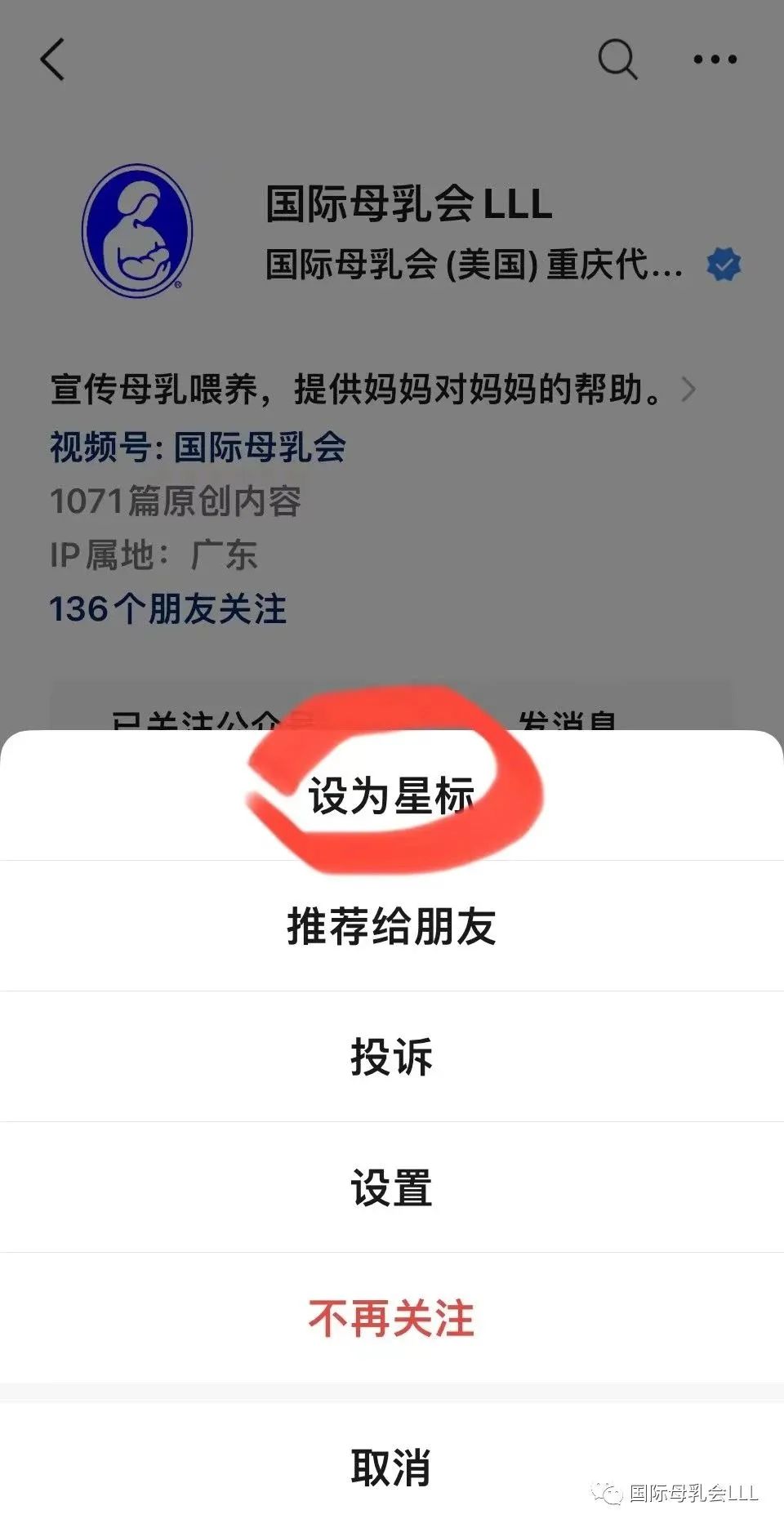

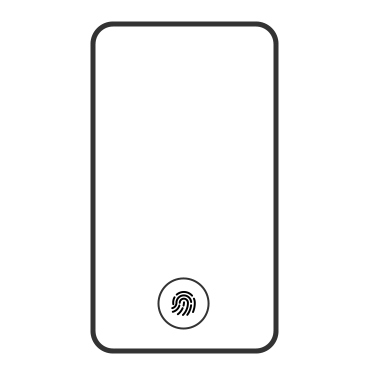
中国移动手机和宽带用户可访问:
muruhui.com 或muruhui.cn
获取更多资讯

本篇文章来源于微信公众号: 国际母乳会LLL
